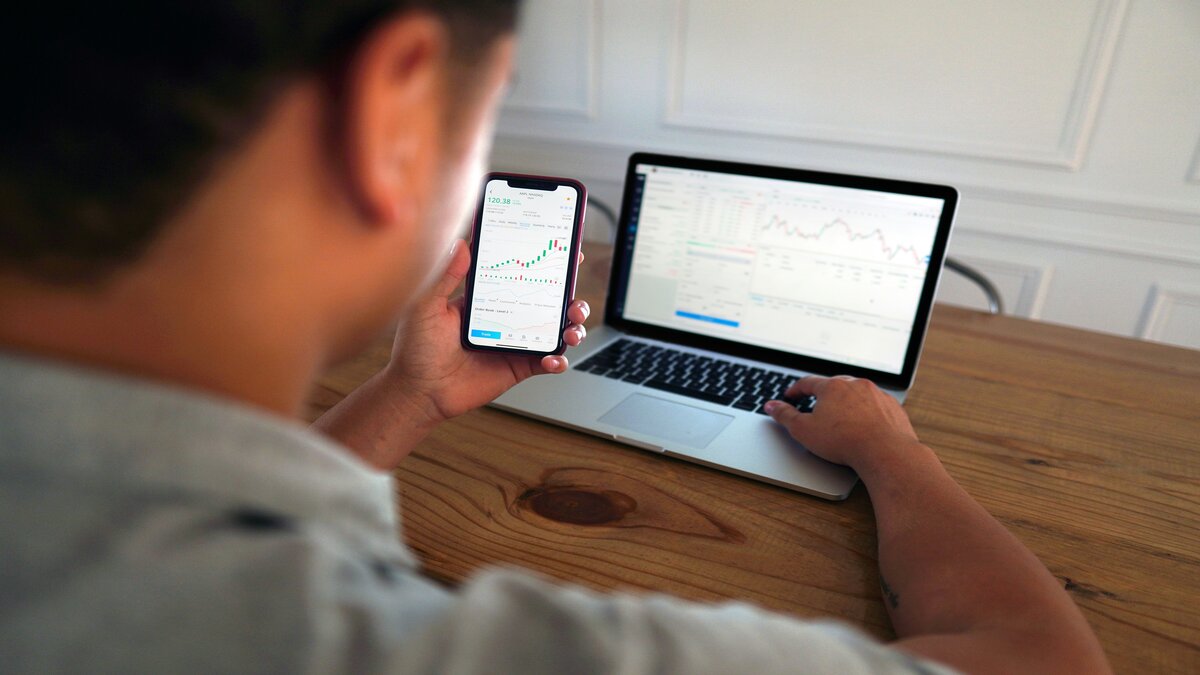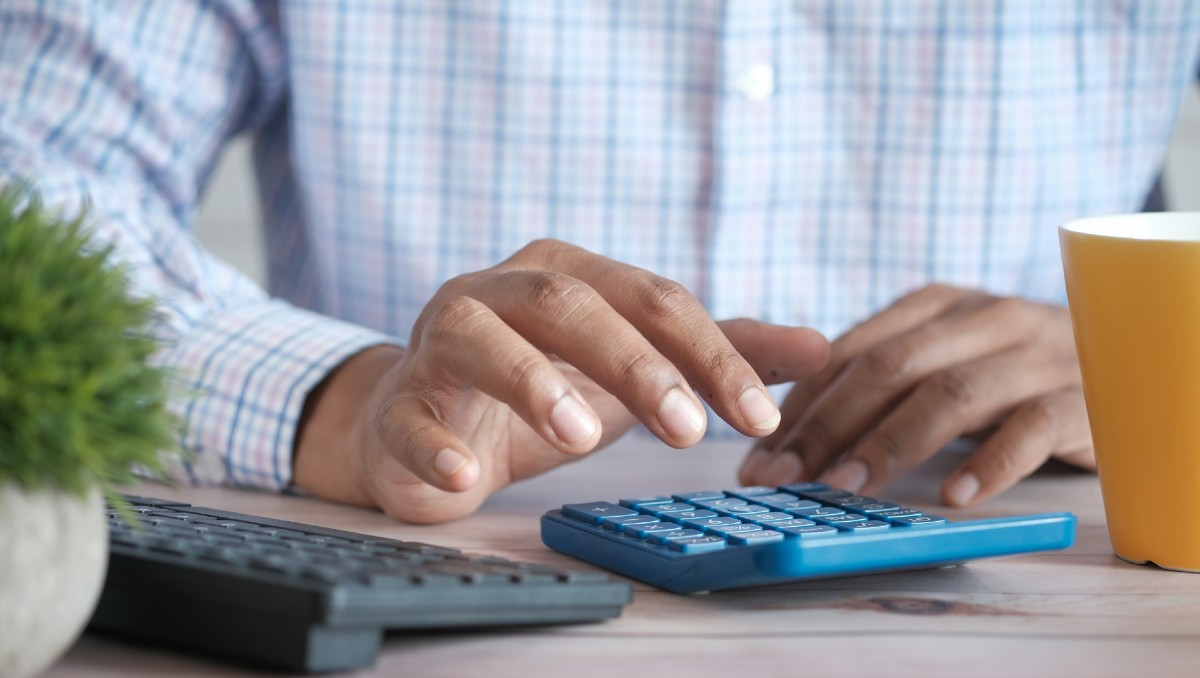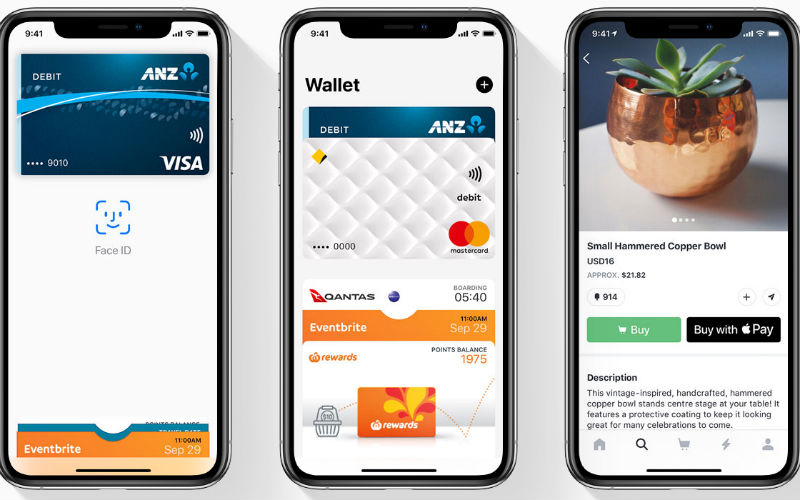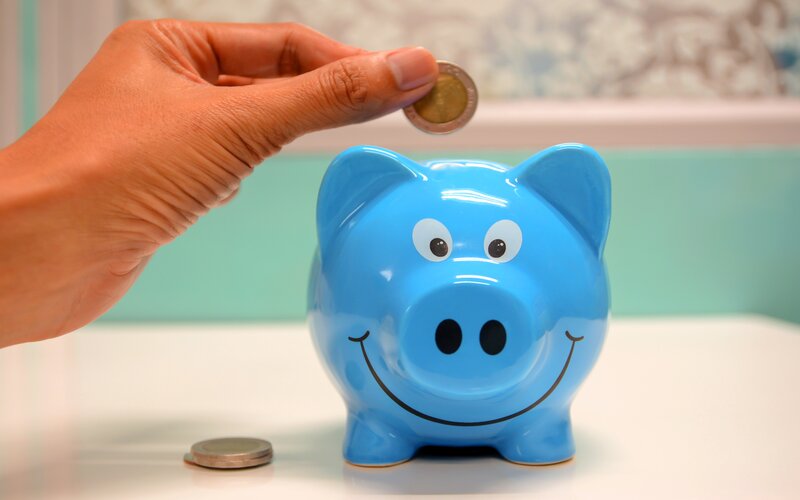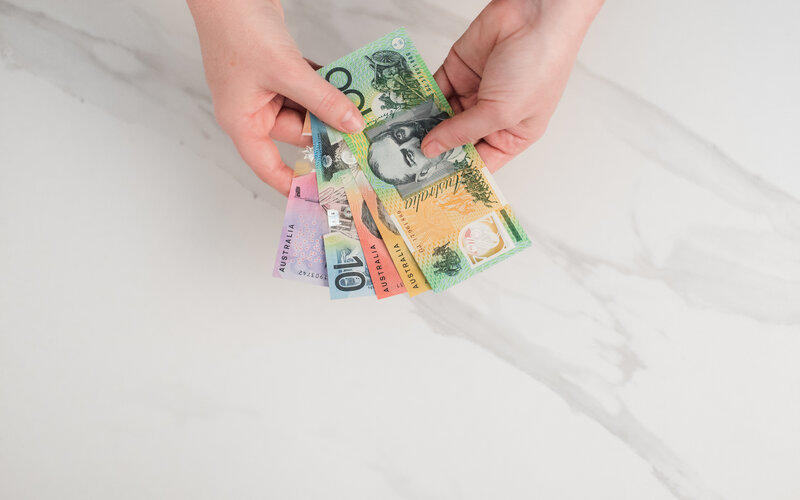Banking in Australia is collectively worth around $5.5 trillion. This figure comprises of residents' assets - loans, deposits, and more.
That's according to the Australian Prudential Regulation Authority (APRA) and its monthly publication on Australian Deposit-taking Institutions (ADIs) i.e. banks.
The major banks - Commonwealth Bank, Westpac, National Australia Bank, and Australian & New Zealand Banking Group - make up a large bulk of this figure.
Who are the big four banks?
You might hear about “the big four” or “the big four banks.” This refers to Commonwealth Bank of Australia (CBA), Westpac Banking Corporation (WBC), National Australia Bank (NAB), and Australian & New Zealand Banking Group (ANZ).
In terms of total residents' assets, according to the latest data from the Australian Prudential Regulation Authority (APRA), the ranking of the big four were:
-
CBA - $1.13 trillion
-
WBC - $1.06 trillion
-
NAB - $893.25 billion
-
ANZ - $764.18 billion
Also called the big four banks, the major players collectively hold assets worth around $3.80 trillion, or about 70% market share. So who are the big four banks, and who's left clamouring for the remaining 30%? Let's find out.
Top 10 Australian Banks - Market Capitalisation
| Rank | Bank & ASX Sign | Market Cap - April 2025 ($AUD billion) |
|---|---|---|
| 1 | Commonwealth Bank - CBA | $257.75 |
| 2 | Westpac - WBC | $109.52 |
| 3 | National Australia Bank | $106.02 |
| 4 | Australia & New Zealand Banking Corp - ANZ | $88.16 |
| 5 | Macquarie Group - MQG | $75.29 |
| 6 | Bendigo & Adelaide Bank - BEN | $6.04 |
| 7 | Bank of Queensland - BOQ | $4.52 |
| 8 | Bank South Pacific - BFL | $3.58 |
| 9 | Judo Bank - JDO | $2.05 |
| 10 | Heartland Bank - HGH | $0.724* |
Current as of 2 April at midday. *New Zealand Dollars
Market capitalisation, or market cap, is a commonly accepted way to measure the size of a public company This is calculated by multiplying the price of a stock by the total number of outstanding shares. The big four banks dominate the Australian Securities Exchange (ASX) in terms of market capitalisation.
However measuring through market cap can be a fickle beast - share prices can and do change daily. Bank scandals, fines from the regulator, mergers and acquisitions, a new CEO, and even an upbeat analyst saying 'buy/sell this stock' can cause a bank's share price to fluctuate. In addition, many international brands have a significant footing in the Australian banking landscape, including HSBC (UK), and ING (Netherlands) and aren’t listed in Australia.
Top 10 - Total Residents' Assets
| Rank | Bank | Value - April 2025 ($AUD billion) |
| 1 | Commonwealth Bank | $1,129.133 |
| 2 | Westpac | $1,063.146 |
| 3 | NAB | $893.250 |
| 4 | ANZ | $764.175 |
| 5 | Macquarie Bank | $280.017 |
| 6 | ING | $118.163 |
| 7 | Bank of Queensland | $116.379 |
| 8 | Bendigo & Adelaide Bank | $116.096 |
| 9 | Suncorp Bank | $97.440 |
| 10 | HSBC | $63.961 |
Top 10 - Owner-Occupier Home Loans
|
Rank |
Bank |
Value - April 2025 ($AUD billion) |
|
1 |
Commonwealth Bank |
$383.984 |
|
2 |
Westpac |
$320.703 |
|
3 |
NAB |
$217.258 |
|
4 |
ANZ |
$207.587 |
|
5 |
Macquarie Bank |
$83.867 |
|
6 |
ING |
$51.462 |
|
7 |
Bendigo & Adelaide Bank |
$49.677 |
|
8 |
Bank of Queensland |
$40.252 |
|
9 |
Suncorp Bank |
$39.575 |
|
10 |
HSBC |
$22.536 |
Top 10 - Investor Home Loans
|
Rank |
Bank |
Value - April 2025 ($AUD billion) |
|---|---|---|
|
1 |
Commonwealth Bank |
$196.775 |
|
2 |
Westpac |
$162.679 |
|
3 |
NAB |
$110.087 |
|
4 |
ANZ |
$103.670 |
|
5 |
Macquarie Bank |
$50.648 |
|
6 |
Bank of Queensland |
$17.136 |
|
7 |
Suncorp |
$15.298 |
|
8 |
Bendigo & Adelaide Bank |
$15.049 |
|
9 |
ING |
$11.978 |
|
10 |
HSBC |
$9.801 |
Compare home loans from Australia's largest banks
| Lender | Home Loan | Interest Rate | Comparison Rate* | Monthly Repayment | Repayment type | Rate Type | Offset | Redraw | Ongoing Fees | Upfront Fees | Max LVR | Lump Sum Repayment | Additional Repayments | Split Loan Option | Tags | Row Tags | Features | Link | Compare | Promoted Product | Disclosure |
|---|---|---|---|---|---|---|---|---|---|---|---|---|---|---|---|---|---|---|---|---|---|
5.59% p.a. | 5.59% p.a. | $2,867 | Principal & Interest | Variable | $0 | $0 | 80% | ||||||||||||||
5.89% p.a. | 6.02% p.a. | $2,962 | Principal & Interest | Variable | $10 | $220 | 80% | ||||||||||||||
5.89% p.a. | 6.14% p.a. | $2,962 | Principal & Interest | Variable | $248 | $350 | 70% | ||||||||||||||
6.04% p.a. | 6.07% p.a. | $3,011 | Principal & Interest | Variable | $0 | $350 | 80% | ||||||||||||||
5.88% p.a. | 6.01% p.a. | $2,959 | Principal & Interest | Variable | $10 | $450 | 70% | ||||||||||||||
6.19% p.a. | 6.20% p.a. | $3,059 | Principal & Interest | Variable | $0 | $0 | 97% | ||||||||||||||
6.19% p.a. | 6.19% p.a. | $3,059 | Principal & Interest | Variable | $0 | $160 | 70% | ||||||||||||||
6.54% p.a. | 6.63% p.a. | $3,174 | Principal & Interest | Variable | $8 | $350 | 80% | ||||||||||||||
6.54% p.a. | 6.92% p.a. | $3,174 | Principal & Interest | Variable | $0 | $0 | 90% |
Top 10 - Household Deposits
|
Rank |
Bank |
Value - April 2025 ($AUD billion) |
|
1 |
Commonwealth Bank |
$418.742 |
|
2 |
Westpac |
$327.611 |
|
3 |
NAB |
$221.549 |
|
4 |
ANZ |
$184.849 |
|
5 |
Macquarie Bank |
$78.150 |
|
6 |
ING Bank |
$52.461 |
|
7 |
Bendigo & Adelaide Bank |
$47.937 |
|
8 |
Suncorp Bank |
$37.059 |
|
9 |
Bank of Queensland |
$34.136 |
|
10 |
HSBC |
$18.763 |
Household deposits refers to transaction accounts, savings accounts, term deposits, and other types of cash deposits.
Westpac joined the $300 billion club in January 2024, while CBA joined the $400b club in August 2024.
In the second half of 2022, Macquarie shot up the ranks from seventh to fifth place, overtaking Bendigo & Adelaide Bank, and ING, in the process.
In that time, Australian households flushed Macquarie savings accounts and term deposits with an extra $13.8 billion.
Compare savings accounts from Australia's largest banks
| Bank | Savings Account | Base Interest Rate | Max Interest Rate | Total Interest Earned | Introductory Term | Minimum Amount | Maximum Amount | Linked Account Required | Minimum Monthly Deposit | Minimum Opening Deposit | Account Keeping Fee | ATM Access | Joint Application | Tags | Row Tags | Features | Link | Compare | Promoted Product | Disclosure |
|---|---|---|---|---|---|---|---|---|---|---|---|---|---|---|---|---|---|---|---|---|
4.75% p.a. | 5.10% p.a. Intro rate for 4 months then 4.75% p.a. | $984 | 4 months | $0 | $99,999,999 | $0 | $0 | $0 | Disclosure | |||||||||||
0.05% p.a. Bonus rate of 5.35% Rate varies on savings amount. | 5.40% p.a. | $1,107 | – | $0 | $99,999 | $1,000 | $0 | $0 |
| Promoted | Disclosure | |||||||||
3.00% p.a. Bonus rate of 0.00% Rate varies on savings amount. | 5.15% p.a. Intro rate for 3 months then 3.00% p.a. | $713 | 3 months | $0 | $99,999,999 | $0 | $0 | $0 | ||||||||||||
2.15% p.a. Bonus rate of 0.00% Rate varies on savings amount. | 4.90% p.a. Intro rate for 5 months then 2.15% p.a. | $664 | 5 months | $0 | $99,999,999 | $0 | $0 | $0 | ||||||||||||
0.35% p.a. Bonus rate of 4.45% Rate varies on savings amount. | 4.80% p.a. | $981 | – | $0 | $99,999,999 | $200 | $0 | $0 | ||||||||||||
0.10% p.a. Bonus rate of 4.45% Rate varies on savings amount. | 4.55% p.a. | $929 | – | $0 | $99,999 | $$formattedMinMonthlyDep.format("%,d",$!{product.minimumMonthlyDeposit}) | $1 | $0 | ||||||||||||
0.40% p.a. Bonus rate of 4.35% Rate varies on savings amount. | 4.75% p.a. | $971 | – | $0 | $99,999,999 | $$formattedMinMonthlyDep.format("%,d",$!{product.minimumMonthlyDeposit}) | $0 | $0 | ||||||||||||
0.10% p.a. Bonus rate of 4.45% Rate varies on savings amount. | 4.55% p.a. | $929 | – | $0 | $99,999 | $$formattedMinMonthlyDep.format("%,d",$!{product.minimumMonthlyDeposit}) | $1 | $0 | ||||||||||||
4.55% p.a. | 4.55% p.a. | $929 | – | $0 | $99,999,999 | – | $0 | $0 | ||||||||||||
0.01% p.a. Bonus rate of 3.74% Rate varies on savings amount. | 3.75% p.a. | $763 | – | $0 | $99,999,999 | $10 | $10 | $0 |
Top 10 - Customer-Owned Banks
| Rank | Institution | Assets - April 2025 ($AUD billion) |
| 1 | People First Bank | $27.435 |
| 2 | Newcastle Greater Mutual | $25.373 |
| 3 | Great Southern Bank | $23.758 |
| 4 | Beyond Bank | $14.314 |
| 5 | Bank Australia | $13.714 |
| 6 | Teachers Mutual | $12.946 |
| 7 | P&N Bank | $10.453 |
| 8 | IMB |
$9.901 |
| 9 | Qudos Bank |
$7.240 |
| 10 | Defence Bank |
$4.622 |
Customer-owned, or mutual banks mean customers have an equal shareholding of the bank. This is regardless of the size of their loan or deposits, and these banks do not have shareholders. Customer-owned banks typically also include credit unions and building societies, and were often founded out of providing banking services to a particular profession e.g. scientists, teachers, police and so on.
The sector is essentially dominated by 'the big three' customer-owned giants, followed by many smaller players. The Customer-Owned Banking Association (COBA) says there are just half the number of institutions a decade ago.
The sector is described as the 'fifth pillar' of Australian banking, collectively taking on the major banks. According to COBA, the sector is worth $150 billion in assets, which pales in comparison to Australia's largest banks.
However, in terms of customer base, KPMG found they are the primary financial institution for more than 10% of the adult population, and have a collective five million members.
They possess 18% of total bank branches - and more than 20% in regional Australia.
Compare home loans from Australia's largest customer-owned banks
| Lender | Home Loan | Interest Rate | Comparison Rate* | Monthly Repayment | Repayment type | Rate Type | Offset | Redraw | Ongoing Fees | Upfront Fees | Max LVR | Lump Sum Repayment | Additional Repayments | Split Loan Option | Tags | Row Tags | Features | Link | Compare | Promoted Product | Disclosure |
|---|---|---|---|---|---|---|---|---|---|---|---|---|---|---|---|---|---|---|---|---|---|
5.43% p.a. | 6.02% p.a. | $2,817 | Principal & Interest | Variable | $350 | $0 | 90% | ||||||||||||||
5.74% p.a. | 5.76% p.a. | $2,915 | Principal & Interest | Variable | $0 | $210 | 70% | ||||||||||||||
5.84% p.a. | 5.85% p.a. | $2,947 | Principal & Interest | Variable | $0 | $180 | 90% |
| |||||||||||||
5.79% p.a. | 5.82% p.a. | $2,931 | Principal & Interest | Variable | $0 | $799 | 70% | ||||||||||||||
5.84% p.a. | 5.88% p.a. | $2,947 | Principal & Interest | Variable | $0 | $0 | 80% |
| |||||||||||||
5.84% p.a. | 5.86% p.a. | $2,947 | Principal & Interest | Variable | $0 | $0 | 80% | ||||||||||||||
6.04% p.a. | 6.07% p.a. | $3,011 | Principal & Interest | Variable | $0 | $null | 80% | ||||||||||||||
8.51% p.a. | 8.57% p.a. | $3,848 | Principal & Interest | Variable | $0 | $750 | 95% | ||||||||||||||
8.71% p.a. | 8.78% p.a. | $3,919 | Principal & Interest | Variable | $0 | $799 | 80% |
What about a non-bank lender?
If you are considering taking out a home loan, car loan or other loan product, there are other financial institutions that provide these services. Non-bank lenders offer a legitimate alternative to traditional banks and have created a competitive environment which provides more choice for the consumer.
The table below features a selection of home loans from non-bank lenders.
| Lender | Home Loan | Interest Rate | Comparison Rate* | Monthly Repayment | Repayment type | Rate Type | Offset | Redraw | Ongoing Fees | Upfront Fees | Max LVR | Lump Sum Repayment | Additional Repayments | Split Loan Option | Tags | Row Tags | Features | Link | Compare | Promoted Product | Disclosure |
|---|---|---|---|---|---|---|---|---|---|---|---|---|---|---|---|---|---|---|---|---|---|
5.74% p.a. | 5.65% p.a. | $2,915 | Principal & Interest | Variable | $0 | $0 | 80% |
| Promoted | Disclosure | |||||||||||
5.79% p.a. | 5.83% p.a. | $2,931 | Principal & Interest | Variable | $0 | $530 | 90% |
| Promoted | Disclosure | |||||||||||
6.29% p.a. | 6.47% p.a. | $3,092 | Principal & Interest | Variable | $15 | $1,325 | 55% | ||||||||||||||
5.99% p.a. | 5.99% p.a. | $2,995 | Principal & Interest | Variable | $0 | $0 | 50% | ||||||||||||||
6.16% p.a. | 6.19% p.a. | $3,049 | Principal & Interest | Variable | $0 | $635 | 60% | ||||||||||||||
5.79% p.a. | 5.80% p.a. | $2,931 | Principal & Interest | Variable | $0 | $0 | 90% | ||||||||||||||
6.13% p.a. | 6.18% p.a. | $3,040 | Principal & Interest | Variable | $0 | $721 | 80% | ||||||||||||||
6.14% p.a. | 6.14% p.a. | $3,043 | Principal & Interest | Variable | $0 | $0 | 60% | ||||||||||||||
5.74% p.a. | 5.79% p.a. | $2,915 | Principal & Interest | Variable | $null | $null | 80% | ||||||||||||||
6.74% p.a. | 7.00% p.a. | $3,240 | Principal & Interest | Variable | $0 | $995 | 70% | ||||||||||||||
5.69% p.a. | 5.95% p.a. | $2,899 | Principal & Interest | Fixed | $0 | $530 | 90% |
| Promoted | Disclosure |
Are Australian banks safe?
In early 2023, a few notable events in global banking happened. Namely, the collapse of Silicon Valley Bank (SVB) and Signature Bank in the United States. These banks collectively had assets of more than US $300 billion.
Around the same time, Credit Suisse faltered and was acquired by fellow Swiss giant UBS, with the help of that country's central bank. Credit Suisse had assets worth over 500 billion Swiss Francs (CHF), while UBS holds over CHF 3.2 trillion. That's like the equivalent of three CommBanks acquiring ANZ.
So you might be wondering, could this happen here? Australian banks are generally very safe, with a few safeguards in place, as detailed below:
Common Equity Tier Ratio (CET1) Ratio
This is basically a requirement of banks to hold capital of at least 4.5% as a percentage of assets on its books. Many of the top Aussie banks far exceed this. For example:
|
CET1 ratio (to risk weighted assets) as of September 30 2024 |
|
|---|---|
|
CommBank |
11.8% |
|
Westpac |
12.69% |
|
NAB |
12.35% |
|
ANZ |
12.2% |
|
Macquarie Bank |
12.8% |
|
Bendigo Bank |
11.32% |
|
Bank of Queensland (BOQ) |
10.66% |
APRA $250,000 guarantee
Australia's prudential regulator guarantees all deposits in Australia up to $250,000 per account, per bank.
This was established by the Rudd Government in 2008 amid the GFC, and was initially guaranteed up to $1 million, before reverting to $250,000 in 2012.
Prior to this, state governments had various deposit insurance policies over the years.
The regulatory environment was a lot different in decades past, and regulation differed slightly depending on if you had money parked at a bank, a building society, or credit union. Now they are all basically one-and-the-same, with APRA's $250,000 guarantee applying uniformly and nationally.
APRA's federal scheme is called the ADI (authorised deposit-taking institution) guarantee, which forms part of the wider Financial Claims Scheme, explained in further detail here.
Basically, this means that if you deposit $250,000 with CBA, and in the hugely unlikely event it folds, you'll be able to get all your money back.
- The guarantee applies per licence. Be aware that some banks share licences, for example UBank and NAB.
- It also applies per account holder, meaning if you share an account with your partner, you're guaranteed $250,000 each.
- It also applies to internationally-owned banks with products in Australia, such as the Dutch-owned ING, and the UK-owned HSBC.
This isn't just for you, either; it is good for the bank in that it prevents consumers from getting spooked and pulling all their money out when a slight scare happens, called a bank run.
This alone creates security in banking in Australia; beyond that, banks in Australia are generally required to have stronger liquidity ratios, and tend to have healthy counter-cyclical capital buffers (CCYB).
“We are the only jurisdiction in the world that mandates banks carry capital to address the risk of rising interest rates as part of their core capital requirements," Mr Lonsdale said.
"The significance of this measure in light of current events is hard to overstate."
Bank collapses in Australia
Bank collapses are incredibly rare in Australia.
In contrast, US regulators estimate there have been 563 bank failures from 2001 through 2023 in the land of the free and home of the brave.
However it depends on how you define it; for this exercise, we'll define it as when an institution requires central bank or government intervention to ensure deposit-holders aren't overly affected.
More recently, a couple of neobanks created some headlines. In early 2021, Xinja folded, handed back its banking licence, and returned all customer deposits.
In mid-2022 Volt Bank did the same. Under the criteria, both aren't considered collapses as they returned all customer deposits, didn't trigger the $250k guarantee, and didn't require central bank intervention.
In the GFC, CommBank acquired Bankwest, while Westpac acquired RAMS and St George. However these weren't strictly due to liquidity problems, and aren't considered collapses.
1. The 1990s
You have to go back to 1990 when the case could be made for a bank collapse.
That year, the Farrow Corporation - parent company of the Pyramid Building Society - collapsed. A run on bank deposits caused it, and it's estimated it cost Victorians $900 million at the time; the Victorian Government introduced a fuel levy to repay deposit holders.
2. The 1970s
In the mid-to-late 1970s, a few banks and building societies required central bank lines of credit, which were drawn down and later repaid.
A number of banks and building societies also required lines of credit and capital injection from state governments, but again, these are not out-and-out collapses.
Institutions included St George Permanent, and the Bank of Adelaide.
3. The Great Depression
Before that you have to go back to 1931 to see when a proper bank collapse happened, which required the intervention of the Commonwealth Bank - then Australia's central bank.
In 1931, NSW's and WA's state-owned banks were acquired by CBA.
The Primary Producers Bank accepted a loan but declined further support and collapsed; and the Federal Deposit Bank had support denied by CBA.
The argument for banking with major banks
The decision on which bank to park your cash, or take out a loan with really depends on your own situation and what you value. If you are looking for easy access to your money through ATMs and value the opportunity to visit a local branch and chat with a staff member, a bigger bank might be what you’re after.
-
Access to your money - Although digital banking is now used more than cash, banking with the big four will mean easier access to ATMs for withdrawing and depositing cash.
-
Visit a local branch - The bigger banks offer the most active branches to get assistance with your banking. Many smaller banks have entirely online services, meaning you can’t visit a branch in your area or speak to a staff member for help with your banking.
-
Customer service - Whether in Australia or overseas, you’ll likely have access to customer service with a major bank. Many smaller banks have no dedicated customer service phone number or in person services.
-
A holistic banking experience - Many major banks can be your one-stop shop for everything from banking, insurance, financial advice, share trading, asset management and more. Smaller banks might not be able to compete with this level of in-depth service.
The argument for banking with a smaller bank
If you are more focused on earning interest on a savings account or term deposit, then smaller banks may offer a better rate as they have to be competitive to attract customers. Similarly, if you’re looking for a local banking experience that gives back to the community, credit unions or customer-owned banks are typically more prolific with these initiatives.
-
Better deals - Due to the popularity of the big four, smaller banks will often offer better rates on savings accounts, and home loan products in an effort to attract customers. Shopping around can often save you money by finding a great deal with a smaller financial institution.
-
Lower fees - Smaller banks reduce their overhead by digitising their customer service and other services. These cuts often filter through to their customers. The bigger banks have branches all over the country, with huge numbers of staff, this means higher costs which can lead to higher fees for their customers.
-
Faster turnaround times - Major banks often have a lot going on, and may take longer to process your home loan application. Smaller banks may pride themselves on faster turnaround times enabling you to get approved for products sooner.
-
Apps - While the big four banks have pretty swish apps, smaller banks such as neobanks pride themselves on their user experience. In these apps you’ll often find money management tools, unique insights and other slick capabilities that other banks' apps may not have developed.
The big four banks are 'big' - but why? A recent history
These banks must abide by what’s called the ‘four pillars policy’. This policy essentially bans these four banks from ever merging. They are also incredibly large banks.
It's also important to note APRA data encompasses major banks' subsidiaries with CBA owning Bankwest; Westpac, BankSA, Bank of Melbourne, St George and RAMS; and NAB, UBank and Citi. This is why you won't see these individual brands in the data.
A lot of the majors' assets are tied up in home lending. The latest data indicates the big four banks make up around 75% of the value of residential home lending in Australia among banks, or nearly $1.6 trillion. They also have a strong presence in New Zealand.
CBA has been firmly entrenched as Australia's largest bank - by pretty much any measurement - for decades, after a legacy of being wholly owned by the Federal Government, and acting as central bank until the RBA was established in 1960.
Westpac firmly holds the two-spot in terms of assets, but jostles with NAB for silver in the market cap rankings.
ANZ is the smallest of the majors, but is still very large in the grand scheme of things. That said, in 2022 Suncorp agreed to spin off its banking arm, and ANZ and Suncorp Bank agreed to merge in a deal worth around $5 billion. ANZ said the acquisition would enable it to compete better with the other major banks.
The ANZ-Suncorp Bank romance sees the major bank's assets grow to more than $800 billion, and become the third-largest bank in terms of home loans.
After the ACCC initially blocked the proposal, the Australian Competition Tribunal heard the appeal and approved the merger in February 2024. It was then approved by Federal Treasurer Jim Chalmers in June 2024.
These assets have had the 'Suncorp' branding stripped, and are now trading as Norfina Limited until the acquisition by ANZ is complete. It should see it come close to beating NAB in the rankings.
Macquarie Bank - making the ‘big four’ the ‘big five’?
Macquarie Bank Limited (MQG) has risen to become one of the largest banks in Australia, and in terms of market cap, it’s up there with the major banks.
In late 2021, Macquarie Group Limited (MQG) hit a market cap of $77.5 billion according to Bloomberg, making it bigger in this regard than ANZ and Westpac at the time.
Since that time it has sometimes jostled with ANZ to claim the crown as Australia's fourth-largest bank, at least in terms of market cap.
It did so again at the end of January 2025.
This potentially makes Australia’s banking landscape dominated by ‘the big five’, however Macquarie is not subject to the four pillars policy. Macquarie also has less of a retail banking presence than the other major banks as you'll see below.
Macquarie sources a lot of its revenue from its investment banking arm, and through international ventures and asset management, rather than through savings accounts, term deposits, home loans, credit cards, and other loans.
ADI Stats Sourced From: APRA Monthly Authorised Deposit-taking Institution Statistics - February 2025
Market Cap Figures Sourced From: ASX

Ready, Set, Buy!
Learn everything you need to know about buying property – from choosing the right property and home loan, to the purchasing process, tips to save money and more!
With bonus Q&A sheet and Crossword!








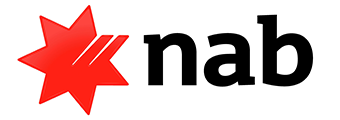




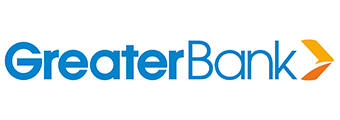


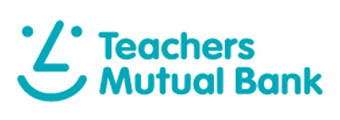

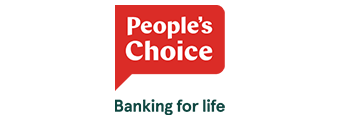



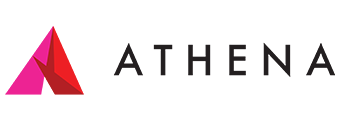
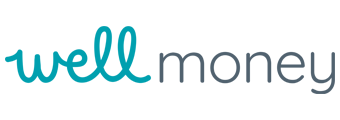
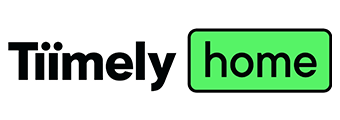

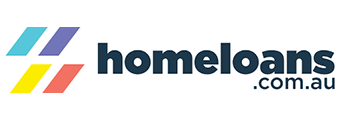
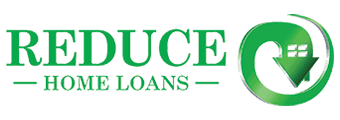


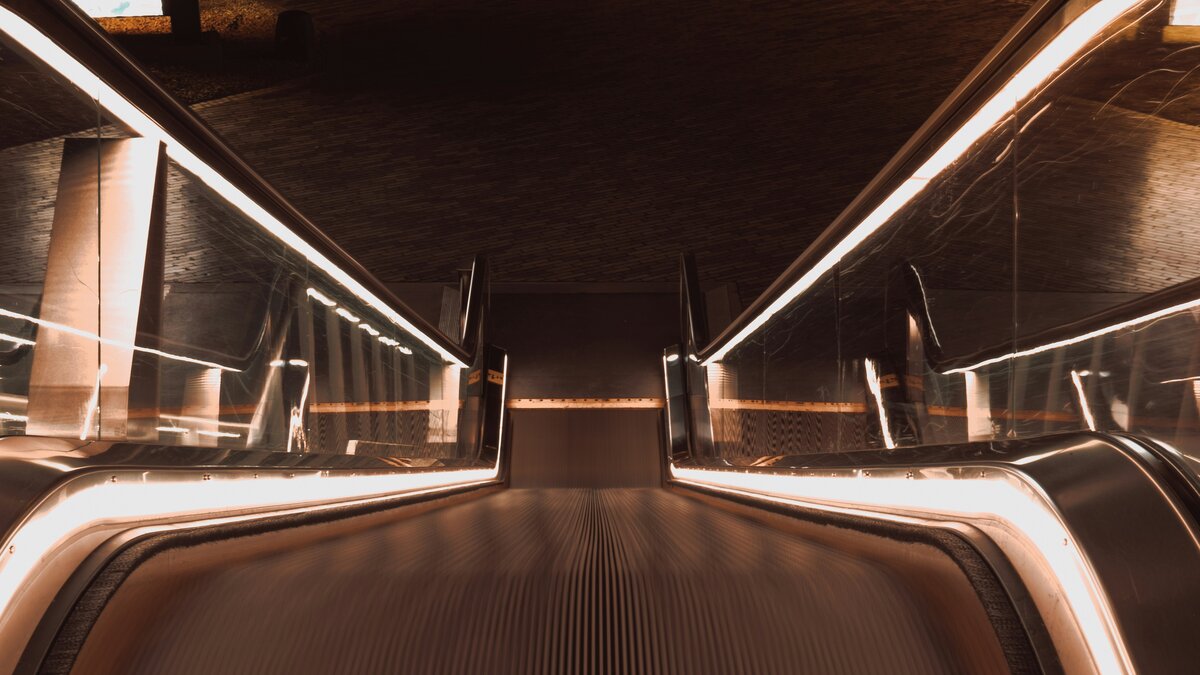
 Harry O'Sullivan
Harry O'Sullivan
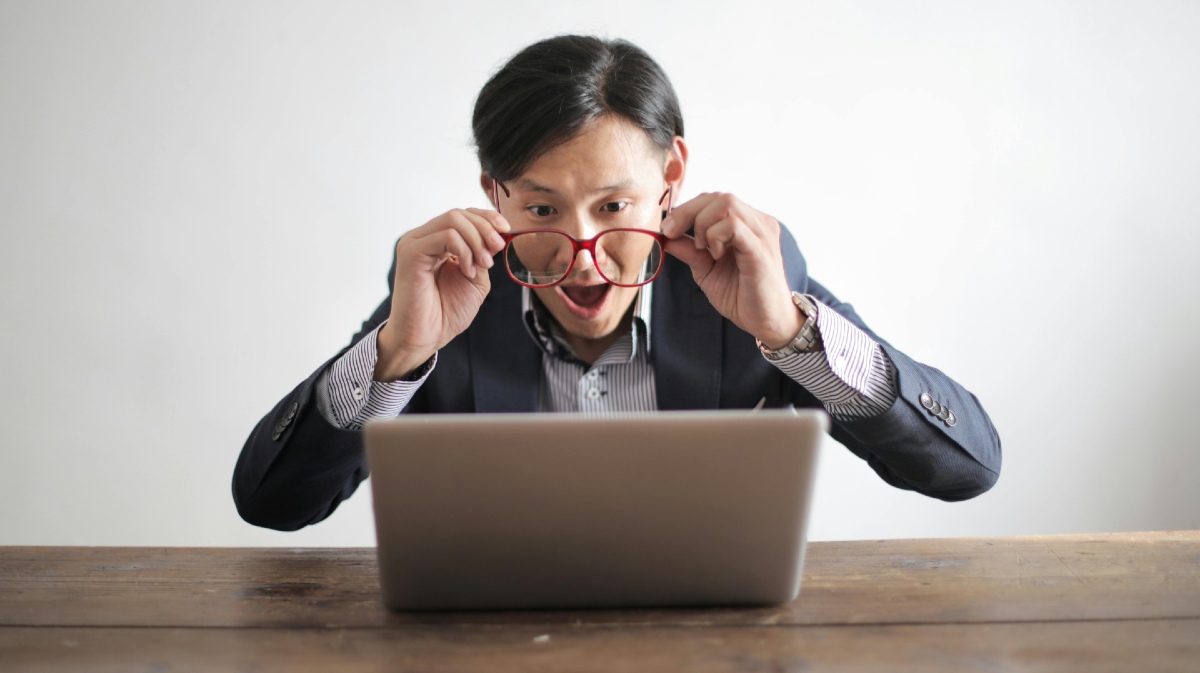
 Denise Raward
Denise Raward